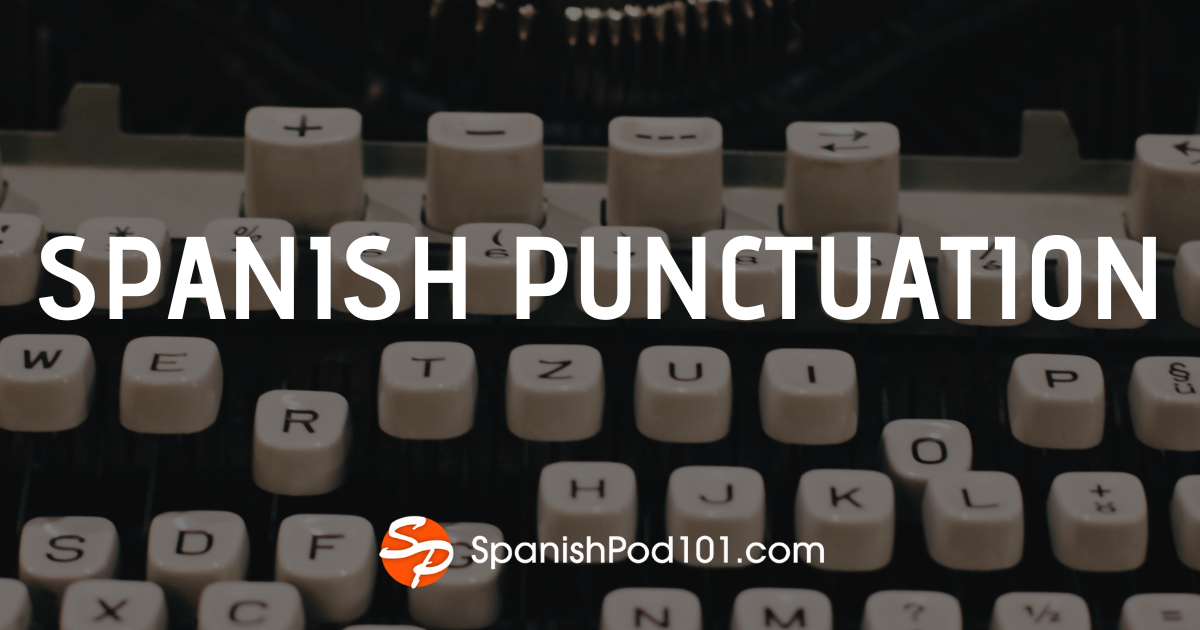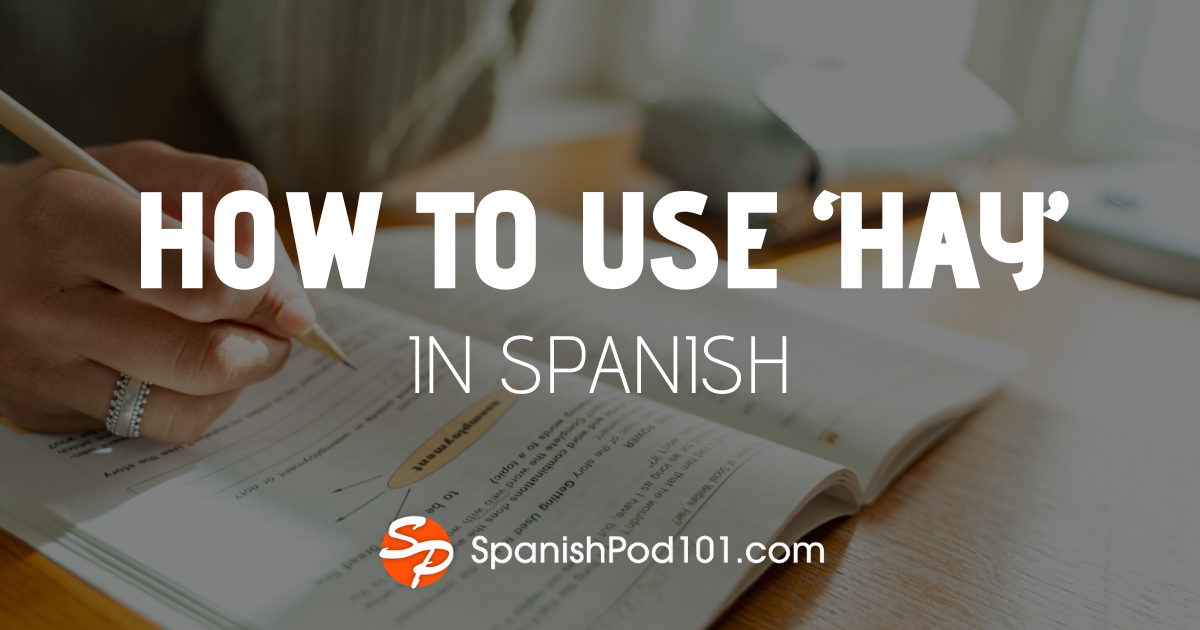
Do you know the names of all the verbal moods and tenses in English (or in your native language)? You might know a few, you might know all of them, or you might not even be familiar with any of them. Knowing the names isn’t so important, unless you’re a huge fan of grammar or you study something related to linguistics. But, even if you don’t know all these names, you know how to use them, don’t you? Otherwise you wouldn’t make much sense in your native language.
We’re going to teach you everything you need to know about the subjunctive Spanish mood and all its tenses, which is going to be incredibly helpful for your Spanish.
This is what’s important: not what we call them—even though it’s still helpful when learning them—but knowing how to use them and understanding the differences between the different moods and tenses. In real life, no one is going to ask you the difference between infinitive and subjunctive, but you must learn them in order to be fluent! Start with a bonus, and download the Must-Know Beginner Vocabulary PDF for FREE! (Logged-In Member Only)
 Table of Contents
Table of Contents
- What is a Grammatical Mood?
- Infinitive vs. Subjunctive
- Subjunctive Spanish Tenses
- Uses of Subjunctive
- How SpanishPod101.com Can Help You Master Spanish
1. What is a Grammatical Mood?
Just like we explained in our article on conjugations, verb conjugations are divided into different groups that we call moods, or modos in Spanish.
Even though there are a few more grammatical moods than the ones we’ll cover today, in Spanish, there are three main verbal moods: infinitivo (“infinitive”), subjuntivo (“subjunctive”), and imperativo (“imperative”).
The third one, imperativo, is the easiest to explain because it’s not divided into several tenses like the other two moods. Instead, it only refers to very specific forms, which are the ones we use to give orders to someone. For example, if you want to make someone sing, you’ll say: ¡Canta! or ¡Cantad! (“Sing!”), depending on whether you’re telling one person (the first example) or more than one (the second example).

The other two moods, infinitive and subjunctive, are the ones we use every time we speak. Whether we want to use the present tense, past tense, or future tense, it will always be a part of one of these two moods. We’ll need to use one or the other depending on what we mean to say.
In today’s article, we’ll be focusing on the Spanish subjunctive mood, but before we do that, we need to explain some of the differences between subjunctive and infinitive, so that you can understand it more easily.
2. Infinitive vs. Subjunctive
Let’s start with the indicative mood. In Spanish, indicative essentially refers to facts, as well as beliefs. Here’s an example:
- El agua se congela a 0 ºC.
“Water freezes at 0 ºC.”
This is definitely a fact, which means it can’t be argued against, so we use the indicative mood.

As opposed to indicative, subjunctive Spanish marks anything that isn’t a fact. Among others, this includes hypothetical statements or something you wish had or hadn’t happened. For example:
- No quiero que te hagas daño.
“I don’t want you to get hurt.”
In the example above, it’s not something that has happened, so it’s not a fact. Instead, this mood has been used to refer to something you wish wouldn’t happen. We hope this doesn’t sound too confusing. If it does, don’t worry, we’ll fix it.
You might not know this, but the subjunctive mood actually exists in English as well. It’s not as widely used as it is in Spanish, and when it is used, it’s not as obvious. Let’s look at the following examples:
- “If I were you, I would go to the doctor.”
- “I wish you were here.”
In the first example, we don’t say “I was,” but “I were.” This is because it’s in the subjunctive mood! In the second example, it shouldn’t surprise us that we use the form “were,” because that’s the form we use for the second person “you.” But it might surprise us that it’s in the past, instead of the present, as in “I wish you are here.” That doesn’t make sense, right? Well, that’s because we need the subjunctive mood, just like in Spanish. So, of course, when translated into Spanish, these two sentences also use the subjunctive mood.
- Si fuese tú, iría al médico.
“If I were you, I would go to the doctor.”
- Ojalá estuvieras aquí.
“I wish you were here.”
3. Subjunctive Spanish Tenses
The subjunctive mood, as we’ve already mentioned, is divided into several tenses. Do you remember our previous article on conjugations? In that article, we had examples of the subjunctive conjugations of a few different verbs. Here, because we don’t want to repeat ourselves, we’re only going to show you one verb, specifically the verb cantar (“to sing”). But you can always check that article again if you need to look at the subjunctive tables.
In Spanish, the “present” (presente) and “past tenses” (pretéritos) of the subjunctive are used quite often, but the two future tenses (futuro simple and futuro compuesto) are never used. They’re included in the following subjunctive Spanish tenses chart so you’re aware that they exist, but there’s no need to learn them. If you ever ask a native Spanish-speaker about them, they wouldn’t even know how to use them!
Note that these tenses don’t have a direct translation in English, but we’ll use them in the examples we’ll give you below.
Simple tenses
| Subject | Presente | Pretérito imperfecto | Futuro simple |
| Yo | cante | cantara or cantase | cantare |
| Tú | cantes | cantaras or cantases | cantares |
| Él/Ella | cante | cantara or cantase | cantare |
| Nosotros/as | cantemos | cantáramos or cantásemos | cantáremos |
| Vosotros/as | cantéis | cantarais or cantaseis | cantareis |
| Ellos/as | canten | cantaran or cantasen | cantaren |
Compound tenses
| Subject | Pretérito perfecto compuesto | Pretérito pluscuamperfecto | Futuro compuesto |
| Yo | haya cantado | hubiera or hubiese cantado | hubiere cantado |
| Tú | hayas cantado | hubieras or hubieses cantado | hubieres cantado |
| Él/Ella | haya cantado | hubiera or hubiese cantado | hubiere cantado |
| Nosotros/as | hayamos cantado | hubiéramos or hubiésemos cantado | hubiéremos cantado |
| Vosotros/as | hayáis cantado | hubierais or hubieseis cantado | hubiereis cantado |
| Ellos/as | hayan cantado | hubieran or hubiesen cantado | hubieren cantado |

4. Uses of Subjunctive
When do you use subjunctive Spanish? As we’ve said before, the subjunctive mood is generally used in sentences that are not facts. We think you’ll find it useful to take a look at the following list of specific uses:
a) Expressing Emotions
You can use the Spanish subjunctive to express feelings or emotions. Anytime you want to say that some action makes you sad, or happy, or angry, you’ll need to use the subjunctive mood.
- Me entristece que te vayas a vivir tan lejos.
“It saddens me that you’re going to live so far away.”
- Me alegró que se hubieran decidido a adoptar un bebé.
“It made me happy that they decided to adopt a baby.”

b) Wishes
As we’ve said before, the subjunctive is often used to express wishes. But before we get into that, we’ll have to tell you about a more basic kind of wish. When all you want to say is something you want, we just use the infinitive form of the verb, as we explained in our previous article about Spanish sentence patterns.
- Quiero comer galletas.
“I want to eat cookies.”
However, sometimes we need to express a wish related to a different subject than the main subject of the sentence. For that, we might use a full sentence, such as in the following examples:
- Espero que te recuperes pronto.
“I hope you get better soon.”
- Mi madre quería que estudiara Arquitectura.
“My mother wanted me to study Architecture.”
Or instead of using a full sentence, we might do something similar to the next example. This sentence uses the word ojalá, which can’t be translated literally into English, but can be understood as “hopefully.” This word can only be used with the subjunctive mood.
- Ojalá hayas aprobado.
“Hopefully you have passed.”
Some other verbs we use to express wishes are gustar (“to like”), preferir (“to prefer”), desear (“to wish”), and apetecer (“to feel like”).
c) Requests or Commands
We always use the subjunctive mood when we need to request or command something (unless we use the imperative!). In this case, we’re giving you two very similar examples, but in different verb tenses.
- Me ha pedido que vaya a ver a la abuela.
“She has asked me to go see grandma.”
- Me pidió que fuera a ver a la abuela.
“She asked me to go see grandma.”

Other verbs you might use as well as pedir (“to ask”) are ordenar (“to command”) and prohibir (“to forbid”).
d) Doubts
As you might remember, we said that sometimes the subjunctive is used when something isn’t a fact. When someone expresses a fact, but you’re not sure it’s true, you can express doubt by using the subjunctive mood.
- No creo que sea verdad.
“I don’t think it’s true.”
- Dudó de que estuviéramos diciendo la verdad.
“She doubted we were telling the truth.”
In the case of doubts, we won’t always use verbs, and there are some expressions that will help you: tal vez / quizá (both mean “maybe”) and seguramente / probablemente (both mean “probably”). In the case of these words, we can use both the indicative and the subjunctive, but we’ll use the subjunctive when our doubt is greater.
- Seguramente está en casa.
“She’s probably home.” (Indicative)
- Seguramente esté en casa.
“She’s probably home.” (Subjunctive)
e) Opinions
When expressing your opinion, notice that we use the indicative in positive sentences, like in the following example:
- Creo que se lo está pasando bien.
“I think he’s having a good time.”
Subjunctive, however, is used in negative sentences:
- No creo que se lo esté pasando bien.
“I don’t think he’s having a good time.”
To express an opinion, other verbs we can use besides creer (“to believe”) are pensar, opinar, considerar… They’re all different synonyms for the verbs “to think” and “to believe.”
5. How SpanishPod101.com Can Help You Master Spanish
We know the subjunctive isn’t the easiest (or most fun) subject to learn, but it’s necessary if you really want to learn Spanish. But grammar isn’t the only thing you can learn with us. At SpanishPod101.com, you’ll learn everything you need to become fluent in Spanish.
Did we answer all your questions about this topic? If not, feel free to reach out in the comments and we’ll do our best to help you out!
If you felt like this was a bit too hard for you right now, remember that we have material for all levels, from absolute beginner to advanced. With us, you can learn grammar, vocabulary, and conversation skills—and you’ll be speaking Spanish in no time!










